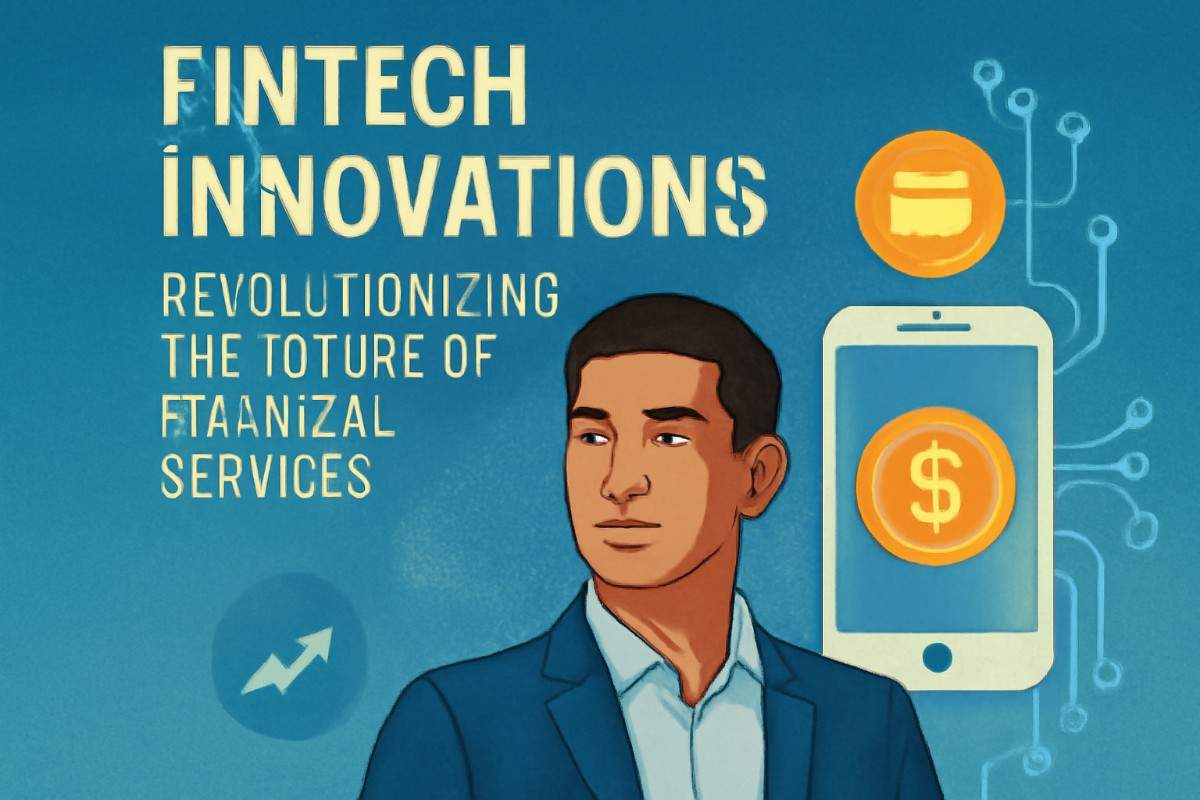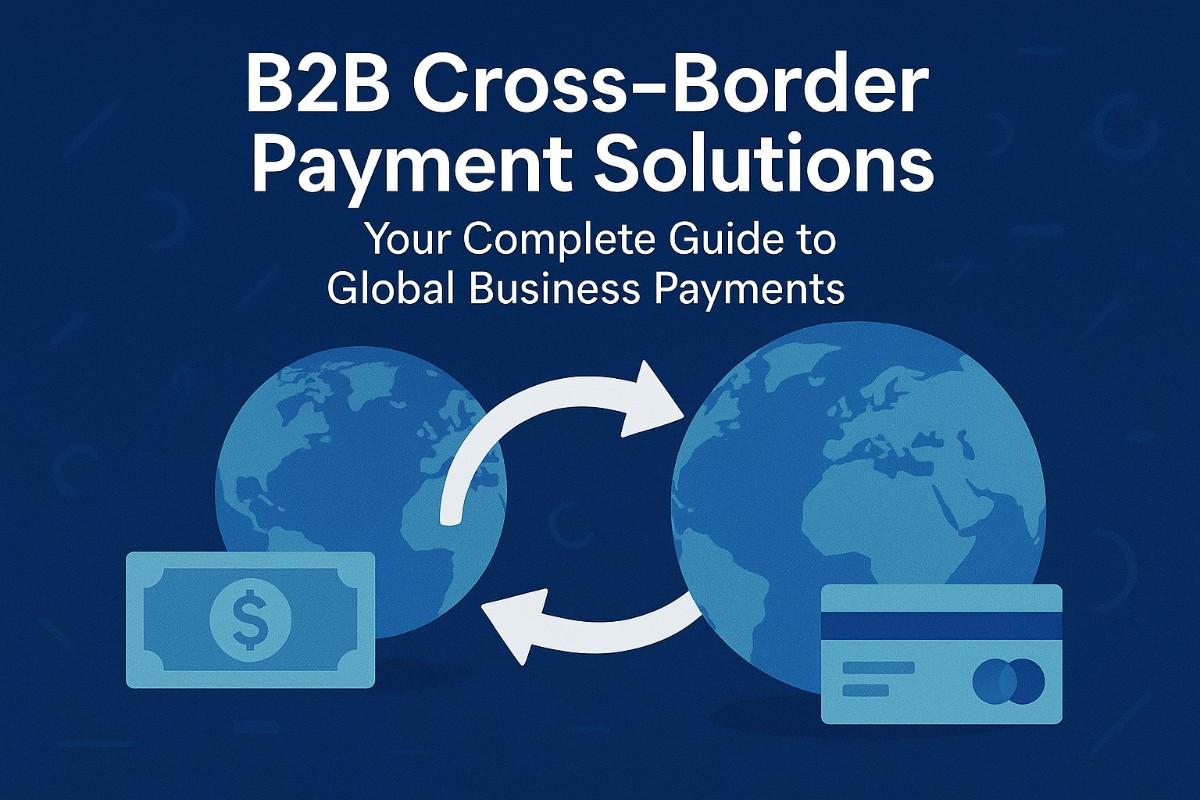Have you ever wondered how your smartphone became more powerful than traditional banks? The financial technology revolution isn’t just changing how we handle money – it’s completely reimagining what financial services can be. From embedded finance solutions to decentralized finance protocols, fintech innovations are creating a more accessible, efficient, and secure financial ecosystem for everyone.
Understanding the Current Fintech Landscape
What Makes Fintech Innovation Essential Today?
The financial world we knew just a decade ago feels almost archaic now. Traditional banking systems, with their lengthy processes and limited accessibility, simply can’t meet today’s digital-first expectations. That’s where fintech innovations step in, acting as the bridge between outdated financial infrastructure and our rapidly evolving digital needs.
Think about it – when was the last time you visited a physical bank branch? Most of us manage our finances entirely through digital platforms, and this shift has accelerated exponentially since 2020. The global fintech market, valued at over $250 billion, continues growing at an unprecedented rate, driven by consumer demand for seamless, instant financial services.
Key Market Drivers Shaping Financial Technology
Several forces are propelling fintech innovation forward. First, there’s the smartphone revolution – with over 6.8 billion smartphone users worldwide, mobile-first financial solutions have become necessity rather than luxury. Second, changing consumer expectations demand instant gratification and personalized experiences that traditional banks struggle to provide.
Regulatory changes also play a crucial role. Open banking regulations in Europe and similar initiatives globally have forced financial institutions to share data through APIs, creating opportunities for innovative fintech solutions to flourish. Additionally, the COVID-19 pandemic accelerated digital adoption by several years, making contactless and remote financial services standard practice.
Core Fintech Innovation Categories Transforming Banking
Embedded Finance Solutions: The Invisible Revolution
Embedded finance represents one of the most significant shifts in how we interact with financial services. Instead of going to a bank or opening a separate financial app, these solutions integrate seamlessly into the platforms we already use daily.
Consider how Uber automatically charges your card after a ride, or how Shopify enables instant loans for merchants directly within their dashboard. These embedded finance solutions eliminate friction by bringing financial services to the point of need, rather than requiring users to seek them out separately.
The beauty of embedded finance lies in its invisibility. Users don’t need to understand complex financial processes – they simply experience smooth, integrated services that feel like natural extensions of their preferred platforms. This approach has proven so effective that McKinsey estimates embedded finance could generate over $230 billion in revenue by 2025.
Digital Banking Infrastructure: Building Tomorrow’s Banks
Modern digital banking infrastructure represents a complete reimagining of how financial institutions operate. Unlike traditional banks that digitized existing processes, new digital banking infrastructure is built from the ground up for the cloud-native, API-first world.
This infrastructure enables banks to launch new products in weeks rather than months, scale globally without physical presence, and integrate with third-party services effortlessly. Neobanks like Chime, Revolut, and Nubank demonstrate how robust digital banking infrastructure can deliver superior customer experiences while operating at a fraction of traditional banking costs.
The modular nature of modern digital banking infrastructure allows financial institutions to pick and choose best-in-class solutions for different services, creating customized banking experiences that would have been impossible with monolithic legacy systems.
Payment Orchestration Platforms: Streamlining Transactions
Payment orchestration platforms solve one of e-commerce’s biggest headaches – managing multiple payment methods, processors, and regional requirements through a single integration. Instead of building separate connections to dozens of payment providers, businesses can use orchestration platforms to access global payment networks through one unified API.
These platforms intelligently route transactions to optimize for success rates, costs, and customer preferences. If a payment fails with one processor, the platform automatically tries alternative routes, significantly improving transaction success rates and customer satisfaction.
Regulatory and Security Innovations
Regulatory Technology Tools: Compliance Made Simple
Regulatory technology, or RegTech, transforms compliance from a burden into a competitive advantage. These tools use artificial intelligence and machine learning to monitor transactions, detect suspicious activities, and ensure adherence to complex regulatory requirements across multiple jurisdictions.
Traditional compliance processes often require armies of analysts manually reviewing transactions and reports. RegTech solutions automate these processes, reducing costs while improving accuracy and speed. Real-time monitoring capabilities enable financial institutions to identify and address compliance issues before they become regulatory problems.
For example, modern RegTech platforms can automatically generate required reports for different regulators, each with their specific formatting and data requirements, saving weeks of manual work while reducing human error risks.
AI Fraud Detection Systems: Protecting Digital Assets
As financial services become increasingly digital, sophisticated fraud detection becomes critical. AI fraud detection systems analyze millions of data points in real-time to identify suspicious patterns and prevent fraudulent transactions before they complete.
These systems learn continuously from new fraud patterns, becoming more effective over time. They can detect subtle anomalies that human analysts might miss, such as slightly unusual spending patterns that indicate account compromise or synthetic identity fraud schemes.
The most advanced AI fraud detection systems balance security with user experience, using risk-based authentication that only adds friction when genuinely suspicious activity is detected. This approach prevents legitimate transactions from being unnecessarily blocked while maintaining robust security.
Digital Identity Verification: Securing Financial Interactions
Digital identity verification has evolved far beyond simple username and password combinations. Modern solutions use biometric authentication, device fingerprinting, and behavioral analytics to create comprehensive identity profiles that are nearly impossible to replicate fraudulently.
These systems can verify identity in seconds rather than days, enabling instant account opening and reducing abandonment rates. Advanced digital identity verification combines multiple verification methods – document verification, facial recognition, liveness detection, and database checks – to create high-confidence identity verification processes.
Blockchain and Cryptocurrency Advancements
Blockchain for Supply Chain Finance
Blockchain technology revolutionizes supply chain finance by creating transparent, immutable records of transactions and asset movements. This transparency reduces fraud, enables faster settlement, and provides better visibility into supply chain operations.
Smart contracts on blockchain platforms can automatically execute payments when specific conditions are met, such as goods reaching their destination or quality inspections being completed. This automation reduces costs, eliminates disputes, and improves cash flow for all parties in the supply chain.
Major corporations like Walmart and Maersk have successfully implemented blockchain supply chain solutions, demonstrating the technology’s practical value in real-world applications.
Cryptocurrency Compliance Tools
As cryptocurrency adoption grows, compliance tools become essential for businesses operating in this space. These tools help cryptocurrency exchanges, wallet providers, and other digital asset businesses comply with anti-money laundering (AML) and know-your-customer (KYC) requirements.
Modern cryptocurrency compliance tools can trace transaction flows across multiple blockchain networks, identify suspicious activities, and generate compliance reports for regulators. They help legitimate cryptocurrency businesses operate within regulatory frameworks while preventing illicit activities.
Decentralized Finance Protocols: The New Financial Ecosystem
Decentralized Finance (DeFi) protocols represent perhaps the most radical fintech innovation, creating financial services without traditional intermediaries. These protocols enable lending, borrowing, trading, and investing through smart contracts rather than banks or brokers.
DeFi innovations like automated market makers, yield farming, and liquidity mining create new ways for people to earn returns on their digital assets. While still emerging, DeFi protocols have already locked over $100 billion in value, demonstrating significant market demand for decentralized financial services.
Banking and Payment Solutions Revolution
Open Banking API Integration: Connecting Financial Services
Open banking APIs enable secure data sharing between financial institutions and third-party providers, creating opportunities for innovative financial products and services. These APIs allow customers to connect their bank accounts to budgeting apps, investment platforms, and other financial tools seamlessly.
The standardization of open banking APIs means developers can build applications that work across multiple banks, reducing development costs and improving interoperability. This connectivity enables comprehensive financial management platforms that aggregate data from multiple sources to provide holistic financial insights.
Digital Wallet Development: The Future of Payments
Digital wallets have evolved from simple payment storage to comprehensive financial management platforms. Modern digital wallet development incorporates features like budget tracking, investment options, bill payment, and even cryptocurrency storage.
The most successful digital wallets focus on user experience, making complex financial operations feel simple and intuitive. They use technologies like near-field communication (NFC) for contactless payments, biometric authentication for security, and machine learning for personalized financial insights.
Cross Border Payment Solutions: Global Financial Connectivity
Traditional cross-border payments often take days to settle and involve multiple intermediaries, each adding fees and complexity. Modern cross-border payment solutions use blockchain, cryptocurrency, and direct banking partnerships to enable near-instant international transfers at significantly lower costs.
These solutions are particularly valuable for remittances, where traditional services often charge high fees that disproportionately impact lower-income families. Innovative cross-border payment platforms can reduce transfer costs from 6-7% to under 1%, making a meaningful difference in recipients’ lives.
Investment and Wealth Management Technologies
Robo Advisor Architecture: Automated Investment Wisdom
Robo advisors democratize professional investment management by using algorithms to create and manage diversified portfolios automatically. These platforms make sophisticated investment strategies accessible to investors with smaller account balances who previously couldn’t access professional wealth management services.
Modern robo advisor architecture incorporates tax-loss harvesting, automatic rebalancing, and goal-based investing features that were once available only to high-net-worth individuals. The automation reduces costs while maintaining disciplined investment approaches that often outperform emotional human decision-making.
Micro Investment Platforms: Democratizing Wealth Building
Micro investment platforms enable people to start investing with small amounts of money, often rounding up spare change from daily purchases to build investment portfolios gradually. These platforms recognize that traditional investment minimums exclude many people from wealth-building opportunities.
By removing barriers to entry and automating the investment process, micro investment platforms help users develop investing habits without requiring extensive financial knowledge or large initial investments. Some platforms gamify the investment experience, making it engaging and educational for new investors.
Wealth Management Automation: Smart Financial Planning
Automated wealth management platforms combine robo advisor functionality with comprehensive financial planning tools. These platforms can optimize asset allocation, tax strategies, and financial goal achievement through sophisticated algorithms and machine learning.
The automation doesn’t replace human advisors entirely but augments their capabilities, handling routine optimization tasks while freeing advisors to focus on complex planning scenarios and client relationships.
Lending and Credit Innovation
Peer to Peer Lending Platforms: Direct Financial Connections
Peer-to-peer (P2P) lending platforms connect borrowers directly with individual or institutional lenders, bypassing traditional banks. These platforms often offer better rates for borrowers and higher returns for lenders by eliminating traditional banking overhead.
P2P platforms use technology to assess credit risk, facilitate transactions, and manage collections, creating efficient marketplaces for credit. They’ve particularly succeeded in markets underserved by traditional banks, such as small business lending and personal loans for borrowers with limited credit history.
Alternative Credit Scoring: Beyond Traditional Metrics
Alternative credit scoring uses non-traditional data sources – such as utility payments, rental history, education, and even social media activity – to assess creditworthiness. This approach enables credit access for people with limited traditional credit history, including young adults, immigrants, and those recovering from financial difficulties.
Machine learning algorithms can identify patterns in alternative data that correlate with repayment behavior, often providing more accurate risk assessments than traditional credit scores alone. This innovation expands credit access while maintaining responsible lending standards.
Data and Analytics in Fintech
Financial Data Aggregation: Creating Comprehensive Views
Financial data aggregation platforms collect information from multiple financial accounts – banks, credit cards, investments, loans – to provide users with comprehensive views of their financial situations. This aggregation enables better financial decision-making by showing complete financial pictures rather than isolated account information.
Real-world Applications and Benefits
These platforms power budgeting apps, investment advisors, and lending platforms by providing complete financial profiles. They enable features like automated categorization of expenses, identification of saving opportunities, and personalized financial recommendations based on actual spending patterns rather than generalized advice.
Specialized Fintech Applications
Insurance Technology Innovations: Insurtech Revolution
Insurance technology innovations modernize one of the world’s oldest financial services industries. Insurtech solutions use IoT devices, telematics, and AI to create usage-based insurance, automate claims processing, and improve risk assessment accuracy.
For example, auto insurance companies now offer policies based on actual driving behavior rather than demographic assumptions, rewarding safe drivers with lower premiums. Similarly, health insurance platforms use wearable device data to encourage healthy behaviors through premium discounts.
Financial Inclusion Technologies: Banking for Everyone
Financial inclusion technologies focus on bringing financial services to underserved populations, including those in developing countries, rural areas, or with limited traditional banking access. These solutions often use mobile technology, agent networks, and simplified interfaces to overcome traditional banking barriers.
Mobile money platforms like M-Pesa in Kenya demonstrate how fintech innovations can leapfrog traditional banking infrastructure, enabling millions of previously unbanked people to access financial services through basic mobile phones.
Future Trends and Opportunities
Emerging Technologies Shaping Tomorrow’s Finance
Several emerging technologies promise to further transform financial services. Quantum computing could revolutionize encryption and risk modeling. Augmented reality might create immersive financial planning experiences. Internet of Things (IoT) devices could enable entirely new forms of automated financial services.
Artificial intelligence continues advancing, promising more sophisticated personalization, risk assessment, and automation capabilities. As these technologies mature, they’ll likely create fintech innovations we can’t yet imagine.
Challenges and Solutions Ahead
Despite tremendous progress, fintech innovation faces significant challenges. Regulatory compliance remains complex, especially for global solutions operating across multiple jurisdictions. Cybersecurity threats evolve constantly, requiring continuous investment in protection measures.
However, the fintech industry has consistently demonstrated its ability to solve complex problems through innovation. Collaborative approaches between traditional financial institutions, fintech startups, and regulators are creating frameworks that encourage innovation while protecting consumers and maintaining financial stability.
The future of fintech lies not in replacing traditional financial services entirely but in creating hybrid solutions that combine the best of both worlds – the innovation and agility of fintech with the stability and trust of established financial institutions.
As these technologies continue evolving, one thing remains clear: fintech innovations will keep reshaping how we think about, interact with, and benefit from financial services. The revolution is just beginning, and the most exciting developments likely lie ahead.



